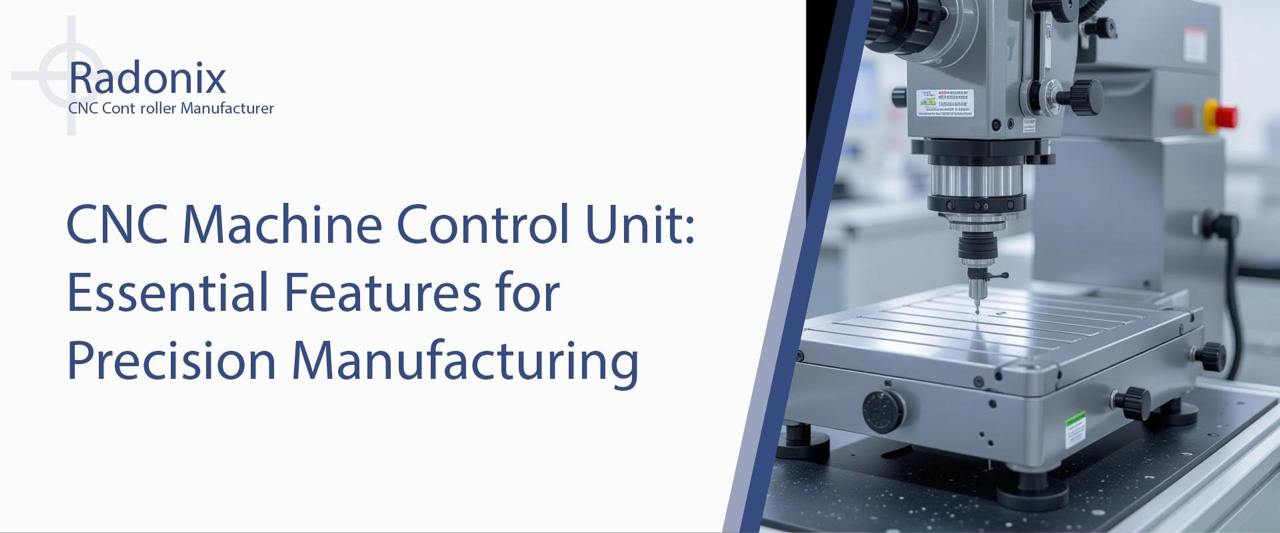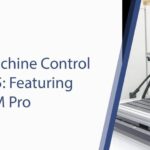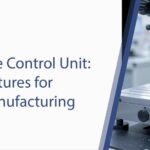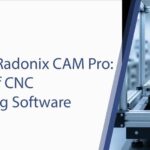Introduction to CNC Machine Control Unit and Their Role in Manufacturing
In the world of precision manufacturing, the CNC machine control unit stands as the brain behind automated operations. This vital component interprets digital instructions to guide machine tools with unparalleled accuracy. By converting computer-generated code into physical movements, CNC machine control units enable manufacturers to produce complex parts efficiently.
These units play a crucial role in industries like aerospace, automotive, and woodworking. They ensure consistent quality by minimizing human error and maximizing repeatability. For instance, a CNC machine control unit manages spindle speeds, tool paths, and axis movements, allowing for intricate designs that traditional methods can’t achieve.
Key features include real-time monitoring, error detection, and integration with CAD/CAM software. This integration streamlines workflows, reducing downtime and boosting productivity. As manufacturing demands evolve, numerical control panels within these units offer advanced interfaces for operators, making them indispensable for modern factories.
Understanding CNC control panel functions is essential for optimizing performance. These panels provide user-friendly controls for programming, diagnostics, and adjustments. With the rise of smart automation, CNC machine control units now incorporate AI-driven features for predictive maintenance and enhanced precision.
At radonix.com, we specialize in robust CNC solutions that empower businesses to achieve superior results. Whether you’re scaling production or refining prototypes, a reliable CNC machine control unit transforms ideas into reality, driving innovation in precision manufacturing.
Key Functions of CNC Control Panels for Seamless Operation
CNC control panels serve as the interactive hub for managing machine operations. These interfaces allow operators to input commands, monitor processes, and make real-time adjustments. Essential CNC control panel functions include program loading, where G-code is uploaded to dictate tool movements.
Another critical function is axis control, enabling precise manipulation of X, Y, Z, and sometimes additional axes like A or B for multi-dimensional machining. Spindle management is key, regulating speed and direction to match material requirements and prevent tool wear.
Error diagnostics form a core part of CNC control panel functions. Panels display alerts for issues like tool breakage or alignment errors, allowing quick interventions. Feed rate overrides provide flexibility, letting operators adjust speeds on the fly for optimal cutting conditions.
Integration with sensors ensures safety features, such as emergency stops and limit switches, are always active. Numerical control panels often include touchscreen interfaces for intuitive navigation, reducing training time.
- Program execution: Starts and pauses machining cycles.
- Tool offset management: Compensates for tool length and diameter variations.
- Data logging: Records performance metrics for analysis.
These functions collectively ensure seamless operation, minimizing waste and enhancing efficiency. For manufacturers, mastering CNC control panel functions leads to higher throughput and better quality control in precision environments.
At radonix.com, our panels are designed for reliability, supporting diverse applications from woodworking to metal fabrication.
Differences Between Numerical Control Panels and Traditional Systems
Numerical control panels represent a leap forward from traditional machine control systems. Traditional setups rely on manual inputs, where operators use dials, levers, and mechanical guides to shape materials. This approach is labor-intensive and prone to inconsistencies due to human variability.
In contrast, numerical control panels automate processes using pre-programmed instructions. They interpret punched tapes or digital codes to control movements, offering greater precision and repeatability. Unlike traditional systems, which require constant supervision, numerical control panels enable unattended operation for extended periods.
Key differences include speed and efficiency. Traditional methods are slower, limited by operator skill, while numerical control panels execute complex paths rapidly. Error rates drop significantly with numerical systems, as they eliminate manual miscalculations.
Traditional systems often use analog controls, lacking the digital feedback loops found in numerical control panels. This means traditional setups can’t easily integrate with modern software, whereas numerical panels support CAD/CAM linkages for seamless design-to-production workflows.
- Flexibility: Numerical panels handle varied tasks without retooling.
- Scalability: Easier to upgrade for multi-axis operations.
- Cost: Initial investment higher, but long-term savings through reduced labor.
Overall, numerical control panels outperform traditional systems in precision manufacturing, making them ideal for high-volume production. Transitioning to these panels boosts competitiveness in today’s automated landscape.
Comparison of CNC Machine Control Units from Top Brands (Radonix CAM Pro, Mastercam, Fusion 360, SolidCAM)
When evaluating CNC machine control units, comparing top brands reveals distinct advantages tailored to different needs. Radonix CAM Pro stands out for its integrated CAD/CAM capabilities, offering easy-to-use interfaces that accelerate production. Its strength lies in seamless hardware-software integration, providing real-time spindle control and 3D engraving precision. With a focus on diverse industries like woodworking and metal, it excels in affordability and expert support, making it ideal for small to medium enterprises seeking reliable CNC machine control units.
Mastercam, a CAM specialist, shines in advanced CNC programming. It offers robust toolpath strategies for complex geometries, with high customization for milling and turning. Advantages include superior simulation tools to prevent errors, though it requires more training compared to others. It’s favored by large manufacturers for its precision in high-volume operations.
Fusion 360 provides a cloud-based all-in-one solution, combining CAD, CAM, and CAE. Its collaborative features allow real-time team edits, and it’s free for hobbyists, lowering entry barriers. Strengths include generative design and simulation, but it may lag in heavy-duty industrial applications due to cloud dependency.
SolidCAM integrates deeply with SolidWorks, delivering full-featured CAM for efficient toolpath generation. It boasts fast processing and iMachining technology for optimized cuts, reducing cycle times. Advantages include user-friendly interfaces for SolidWorks users, though it’s less versatile outside that ecosystem.
In summary:
- Radonix CAM Pro: Best for integration and support.
- Mastercam: Superior for complex programming.
- Fusion 360: Excellent for collaboration and accessibility.
- SolidCAM: Optimal for SolidWorks environments.
Choosing depends on workflow needs, with Radonix offering balanced value for precision manufacturing.
Integrating Radonix CAM Pro with CNC Control Units
Integrating Radonix CAM Pro with CNC machine control units streamlines manufacturing workflows. This software translates CAD designs into G-code, which the control unit executes for precise machining. Start by ensuring compatibility: Radonix CAM Pro works seamlessly with Radonix control boards, supporting multiple axes and real-time monitoring.
The process involves loading designs into the software, generating toolpaths, and transferring data via USB or network to the CNC machine control unit. This integration enhances CNC control panel functions, allowing operators to visualize operations on intuitive interfaces.
Benefits include reduced setup time and error minimization through simulation features. Radonix CAM Pro integration supports diverse machines, from mills to lathes, enabling Radonix CAM Pro integration across industries.
At radonix.com, we offer free trials for testing compatibility, fast downloads for quick implementation, expert support for troubleshooting, and diverse integrations with third-party hardware. This ensures smooth adoption, boosting productivity.
Steps for integration:
- Install Radonix CAM Pro and connect to the control unit.
- Calibrate axes and tools within the software.
- Run test cycles to verify precision.
Numerical control panels benefit from this setup, providing advanced diagnostics. Overall, Radonix CAM Pro integration transforms standard units into smart systems for efficient precision manufacturing.
Guide to Selecting the Best CNC Machine Control Unit for Your Needs
Selecting the right CNC machine control unit requires evaluating your manufacturing goals. Consider machine type: mills need multi-axis support, while lathes prioritize spindle control. Assess compatibility with existing software for smooth integration.
Key factors include processing power for handling complex programs and interface usability to minimize training. Look for units with robust CNC control panel functions, such as touchscreen displays and error alerts.
Budget plays a role—entry-level units suit small shops, while advanced models with AI features benefit high-volume operations. Evaluate expandability: choose scalable systems for future upgrades.
Reliability is crucial; opt for brands with warranties and support. At radonix.com, our units offer 10-year warranties, 24/7 expert support, free trials, fast downloads, and diverse integrations.
Checklist for selection:
- Define application: Precision needs dictate features.
- Check specs: Axes, speed, and memory.
- Test compatibility: Ensure Radonix CAM Pro integration.
- Review user feedback: Focus on ease of use.
Numerical control panels should offer intuitive controls. By prioritizing these, you’ll secure a CNC machine control unit that enhances efficiency and precision in your operations.
Frequently Asked Questions About CNC Control Panel Functions
- What is the primary role of CNC control panel functions? They manage machine operations, from program input to real-time adjustments, ensuring precise execution.
- How do CNC control panel functions differ from manual controls? Unlike manual dials, they use digital interfaces for automated, error-free commands.
- Can CNC control panel functions handle multi-axis movements? Yes, they coordinate X, Y, Z, and rotary axes for complex geometries.
- What safety features are included in CNC control panel functions? Emergency stops, limit switches, and overload protection prevent accidents.
- How do I troubleshoot issues using CNC control panel functions? Diagnostic screens display error codes, guiding quick resolutions.
- Is training required for operating CNC control panel functions? Basic familiarity helps, but intuitive designs reduce learning curves.
- What maintenance do CNC control panel functions need? Regular software updates and cleaning ensure longevity.
- How does integration affect CNC control panel functions? Seamless software links enhance monitoring and efficiency.
For more on numerical control panels, explore radonix.com resources.
In summary, CNC machine control units are pivotal for achieving precision in manufacturing, offering advanced features that surpass traditional systems. From key functions to brand comparisons and integration tips, selecting the right unit optimizes operations.
Ready to elevate your production? Visit radonix.com today for free trials, fast downloads, and expert support. Download Radonix CAM Pro or contact our team to integrate cutting-edge solutions into your workflow.








